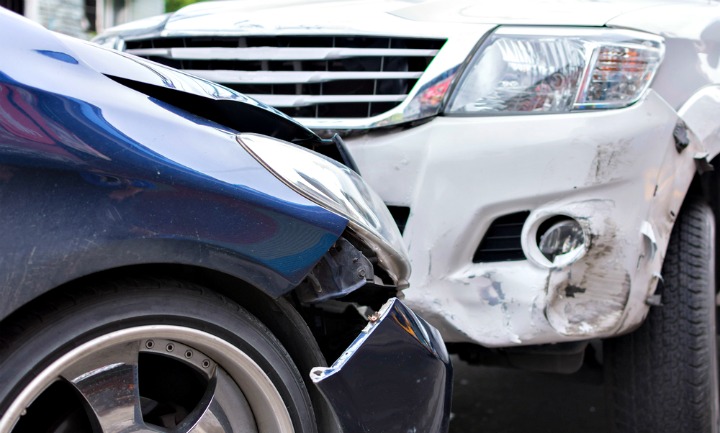How Does Car Insurance Work? A Complete Guide to Understanding Auto Insurance

Figuring out car insurance can be a hassle. Many options are out there, not just among companies but also the kind of coverage to get. And then they throw all sorts of confusing terminology at you.
We want to help you understand just how car insurance works, so we’ve created this complete guide to understanding auto insurance. This way the hassle doesn’t remain a hassle for long.
New car insurance
When you’re buying a new vehicle, make sure to contact your insurance agent before you complete the deal. If it’s your first vehicle, then definitely shop for car insurance rates online to make sure you’re getting the right coverage. Many states require you have car insurance within 10 to 15 days of buying a vehicle.
Of the 50 states, all but New Hampshire require liability coverage. Some dealerships won’t let you drive the car off the lot without proof of insurance. If you have existing coverage, you can transfer the coverage over to your new vehicle.
If you purchase a car over the weekend and can’t contact your agent to set up coverage then you will need to show you already own a vehicle in order to take possession. Often there is a clause in your policy that grants a 30-day window to report a new purchase.
If you do transfer an existing policy, know that it is literally the same policy. So, if you only had liability before, you will need to go in and add collision and comprehensive coverage (if you so desire).
Buying a new vehicle might be the perfect time to switch insurance companies. You can receive a new car insurance quote from an agent or another company online at the time that you purchase the new vehicle. You don’t have to wait until your current policy expires.
Car repair insurance
Car repair insurance, or mechanical breakdown coverage, is a little-known insurance option offered from a few insurance companies, such as Mercury Insurance and GEICO. This kind of coverage can be added to a regular auto insurance policy.
Adding it to your policy can help save you from carrying the cost of major repairs, such as a blown engine or transmission all on your own.
Car repair insurance is similar to service contracts or extended warranties sold by dealers and auto manufacturers. It will cover the same kinds of problems, meaning that it will pay to fix mechanical issues after your car’s new warranty expires.
These policies, however, do have limitations:
- You need to begin coverage when the car is fairly new. Some companies only allow you to sign up if the car is less than 15 months old and has fewer than 15,000 miles on the odometer.
- You can’t keep the coverage as your car gets older and becomes more likely to break down. Generally, you’ll have to drop the coverage after about seven years or 100,000 miles.
Car repair coverage usually comes with a $100 to $250 deductible, so many minor repairs won’t be covered. If it is a major repair, you will have to contact your insurer to file a claim and get pre-authorization.
After that, you can go to any authorized repair shop of your choosing, then the insurance company will handle the payment of any costs over your deductible.
How much car insurance do I need?
The amount of car insurance you need depends on many things: what kind of car you have, if you have health insurance, where you live and more.
If you have an older vehicle, you may not care much about getting collision or comprehensive coverage, especially if after an accident the cost of paying for the collision is more than the cost of the vehicle.
Having health insurance or disability insurance can mean you don’t necessarily need to spend a lot on personal injury protection. The big thing you need to pay attention to is uninsured and underinsured coverage.
If your car is hit by someone who doesn’t have car insurance, then the damages to your vehicle won’t be covered by them. This is when uninsured coverage will kick in. Same with under-insured — if you’re hit by someone with coverage that won’t cover all the costs of your vehicle’s damages, then your underinsured coverage will kick in so you’re not floating the bill.
When it comes to figuring out the right amount for you, don’t worry about the national average. Instead. pay attention to your own individual situation.

Can you get car insurance without a license?
Insurers use your driving record as one of the many factors to determine car insurance rates. However, you can get car insurance without a license, though it will take a bit more work.
When you apply for car insurance you need to provide a valid driver’s license number, this is where you’ll hit a bump. Most insurers let you include what they call a principal or primary driver, which is where you find a loophole. Through this you can include someone else as the primary driver even with your name (and money) on the policy. The primary driver isn’t necessarily the policyholder. One instance would be if you own a car but have a personal driver.
Of course, this doesn’t mean you can just put anyone on the policy. Insurers base their rates on activity that is likely to happen with the car.
A few other situations in which you may need to get insurance without a license include under judgment order (if a judge ordered you to get a license), a suspended driver license or when you are improving your driving record.
Car insurance without a car
If you don’t own a car, but still drive often, you may want to think about a non-owner auto insurance policy. When you drive someone else’s vehicle, their policy should cover you if you are using the car with their permission.
However, if you get in an accident and the cost of damages exceed the amount specified on their liability coverage, you may be stuck paying a large portion of it.
Non-owner insurance is helpful if you are without a car for a long period of time, such as if you’re abroad for a year but want to maintain continuous coverage to prevent higher rates when you come back. Other reasons why you may want to invest in non-owner insurance is if you live in a city and borrow or rent a car occasionally.
If you fall under any of these situations, a non-owner car insurance policy may be the most economical way to protect yourself and your assets in case of an accident.
Car insurance for teens
If you have kids who are reaching that sweet driving age, you may start stressing about adding them to your policy as it could raise your rates. It may be wise to add them to the family plan rather than getting a separate policy.
Adding teenagers to your policy can be a great idea, especially if they borrow your car or if you borrow theirs.
However, if you have an expensive-to-insure vehicle, such as a luxury or sports car, you may want to insure your teen on a separate policy. You could also teach them financial responsibility by putting them on their own policy.
Some companies offer great teen car insurance discounts with policies that are perfectly designed for teen drivers. These discounts can help soften the impact of adding a teen to an auto policy.

What is a car insurance deductible?
Car insurance policies have a lot of different parts to them, so it can get confusing trying to figure out what goes where and what covers what. To break it down, your deductible is one of the most important parts of your car insurance policies. The deductible basically answers this question “What are you willing to pay out-of-pocket when you have a claim?”
Your deductible is the amount you owe for repairs if your car is damaged in an accident or another covered situation under collision or comprehensive coverage, such as a storm. After you pay your deductible, your auto insurance company will cover the rest.
For example, if you crash your car and it causes $3,000 in damages to your vehicle and you have a $500 deductible, then you will pay $500 and your insurance company will pay the remaining $2,500.
When it comes to selecting your deductible, it is important to choose an amount that you can afford if an accident does happen. The price of your deductible also will depend on your policy’s premium, which is your insurance bill.
If you decide to pay a higher monthly premium, your deductible will be lowered. If you are in a situation where you can pay a higher monthly premium you can easily lower that deductible.
However, if you need to save a little money, increasing your deductible will lower your premium and save you money. You will need to be sure to keep adding money to your savings in case of an accident and you have to pay a higher deductible.
Consider your household budget, income, personal savings and your available credit when you are comparing deductible to premium rates.
Is car insurance tax deductible?
The start of each year brings about the question of what you can claim on your taxes. Have you ever wondered if your car insurance is tax deductible? You better believe it is. But it depends on the situation. The best course of action is to check with the IRS or a tax professional to determine if you can claim a deduction.
As a general rule, here are a couple situations in which you can claim your car insurance on your taxes:
- If you drive a car or truck for business, you could be eligible for a deduction. This kind of tax break is available if you’re self-employed and file a Schedule C, or if you use your vehicle to conduct business for an employer and file Form 2106 Employee Business Expenses. There is a catch to this situation — you will have to pick between deducting mileage or deducting actual vehicle expenses.
- If your car is damaged or stolen, you could claim a theft or casualty loss deduction if your car insurance coverage doesn’t completely reimburse you for the loss.
Knowledge is definitely power when selecting the best insurance company and policy. Understanding the terms and how you can save money will give you a great headstart.
